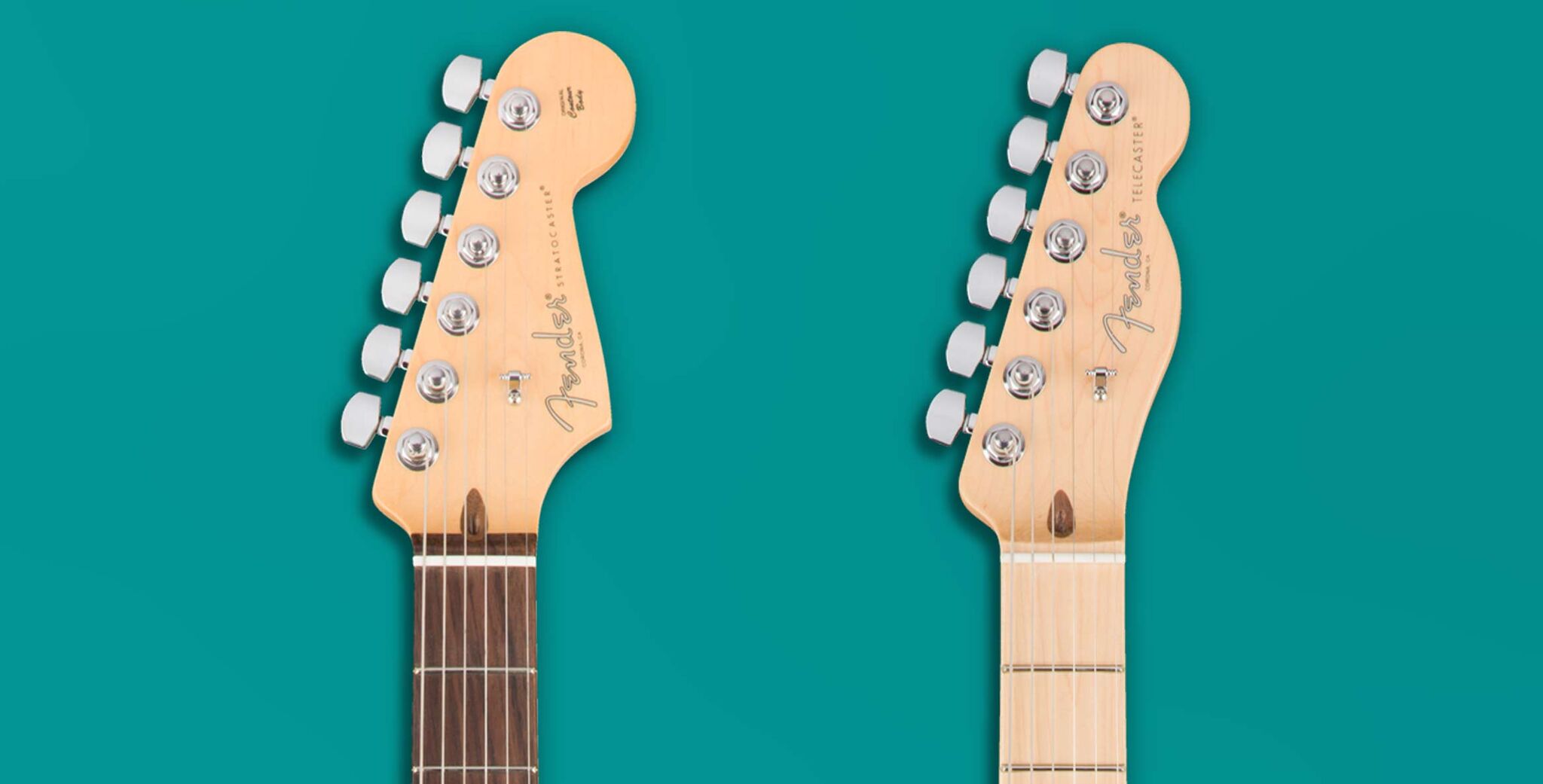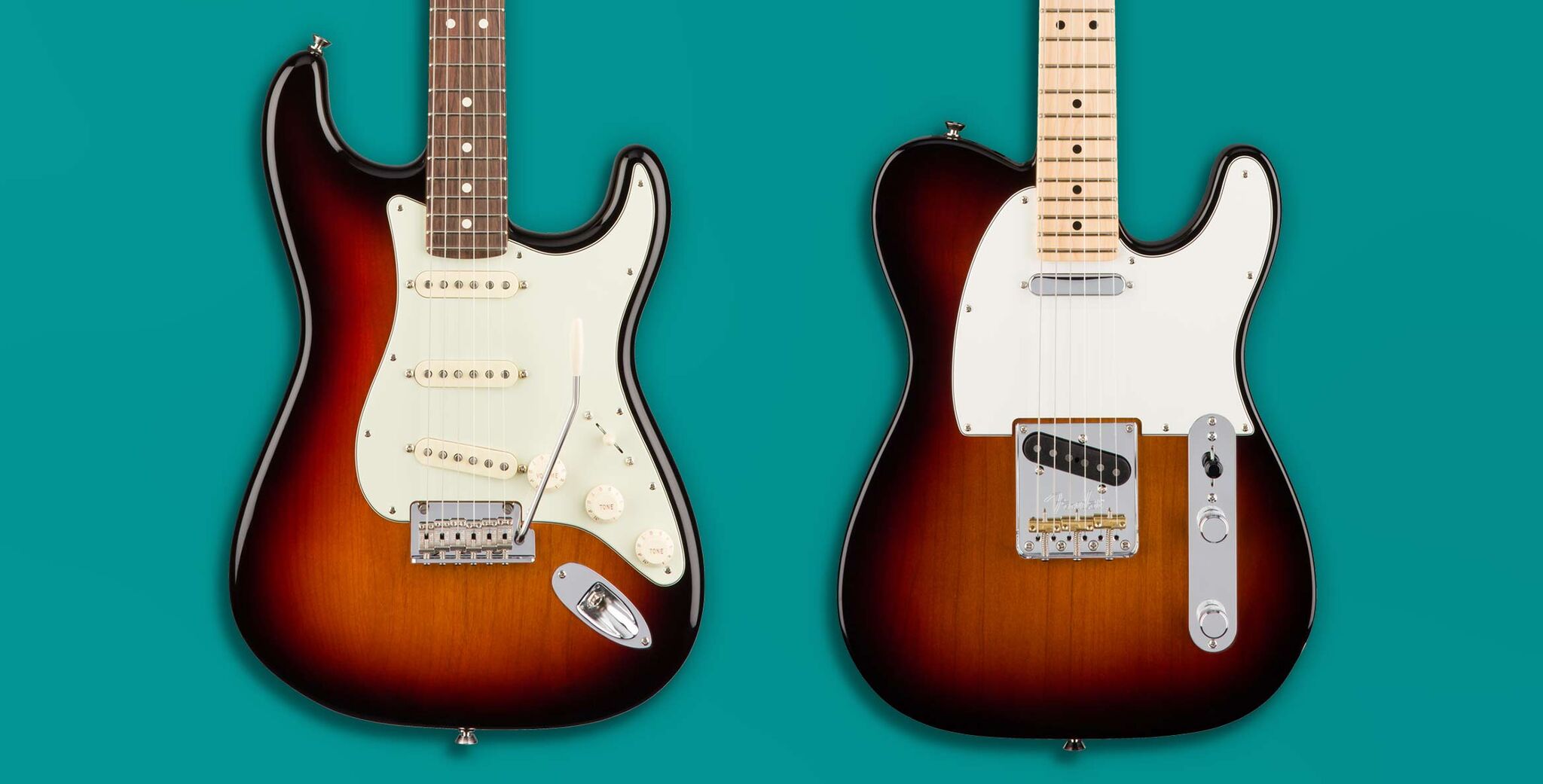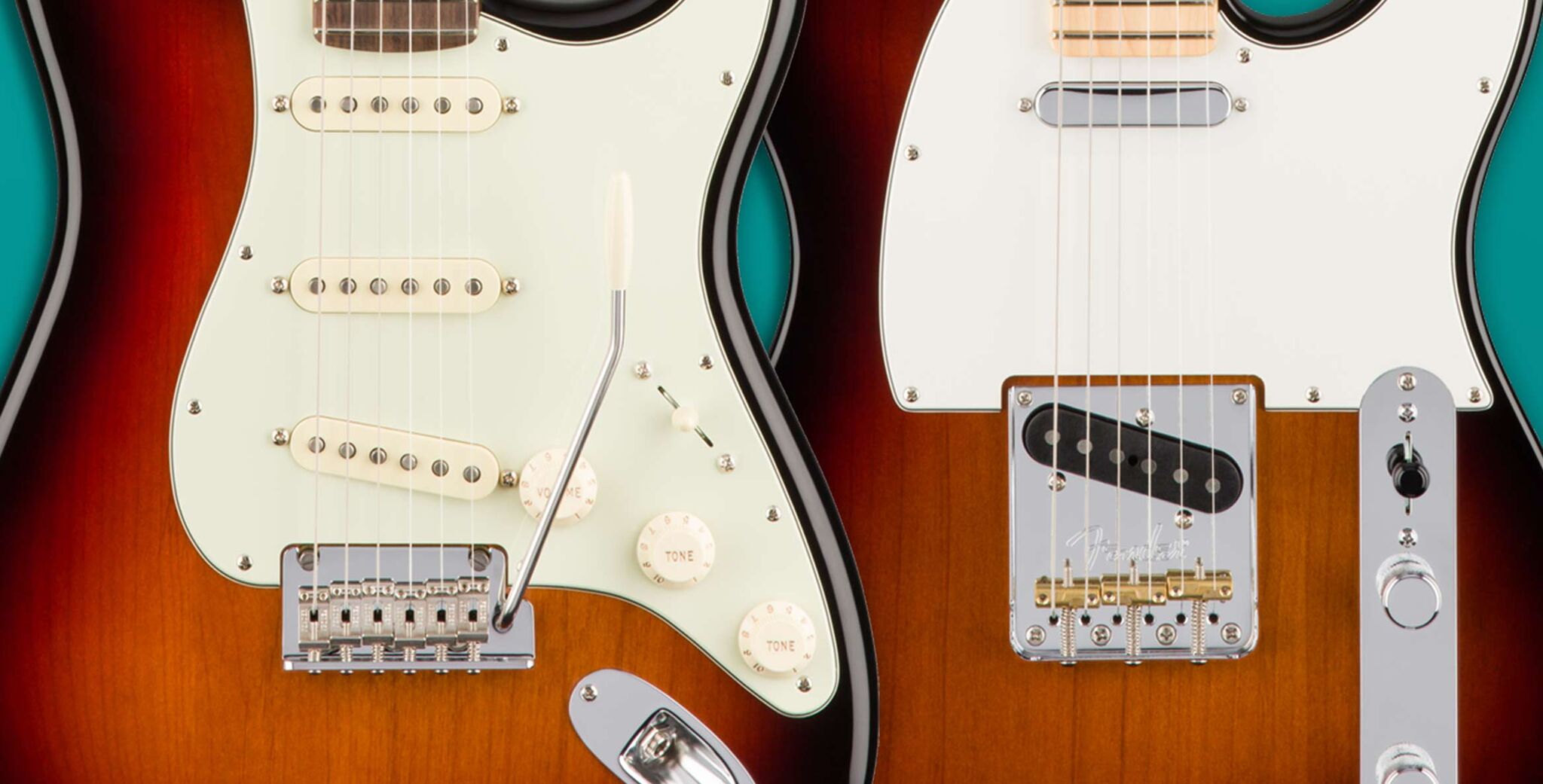3 Min ReadBy Mike Duffy
Stratocaster or Telecaster: Understanding the Basic Differences
Can't decide between a Strat or a Tele? Here is a basic guide between the two.

The Telecaster and the Stratocaster — two instruments that set the standard for electric guitars since their inception in the 1950s.
Both guitars are beloved by casual players and iconic artists alike around the world and have been used to create just about every genre of music imagineable.
For those looking to purchase a first Fender or Squier Tele or Strat, there are a few differences that could help you choose between this iconic pair.
Looking for a beginner guitar? Our interactive gear guide, FindYour.Fender.com, matches you with the perfect model by learning about your sound & style. You’ll be well on your way to finding the right guitar for you.
But first ...
A Brief History Lesson
As the world’s first commercially successful solid-body electric guitar, the Telecaster was groundbreaking when Leo Fender introduced it in 1951.
At the time, rock and roll was still a few years away, and Leo and his staff were building guitars and amplifiers for western swing guitarists looking to get more volume and projection.
"There are very few objects that you can think of that influence an entire movement in music that if they didn’t exist could have — and probably would have — changed the course of musical history. I think the Fender Telecaster is one of those iconic objects." — THE EDGE
Twang-loving country legends like Luther Perkins and Buck Owens helped bring the Telecaster sound to the masses, influencing rock players like Keith Richards, Jimmy Page and George Harrison who would, in turn, change the face of music in the 1960s and beyond.
As for the Stratocaster, Leo was initially looking to refine the classic Tele design, but during the development process, an entirely new model rose from the sawdust. Owing many design elements to the Telecaster, in addition to the Precision Bass that also came out in 1951, the Strat was a step up, boasting three pickups with switching and controls that created greater tonal versatility, a contoured body, and an innovative bridge.
Introduced in 1954, the guitar piqued curiosity when Buddy Holly played one on the Ed Sullivan Show in 1957, but truly gained global acclaim in the hands of 1960s virtuosos like Jimi Hendrix, David Gilmour, Robin Trower and Eric Clapton.
When I first saw a Stratocaster, I realized it’s a thing of sculpted beauty. It could be something flying through space to me. It’s a utilitarian thing, but it’s beautiful." — MARK KNOPFLER
Amazingly, traditional versions of the Stratocaster and Telecaster have gone largely unchanged for more than 60 years, and their popularity shows no signs of waning.
While Fender has made several iterations of both guitars over the years, here is a breakdown of what separates is thought of a traditional Tele and Strat.
Stratocaster Players
Robbie Robertson (the Band)
Mark Knopfler (Dire Straits)
Dave Murray (Iron Maiden)
Nile Rodgers (Chic, David Bowie)
Billy Corgan (Smashing Pumpkins)
John Frusciante
Jim Root (Slipknot)
Telecaster Players
Luther Perkins
Stever Cropper
George Harrison
Graham Coxon (Blur)
Joe Strummer (the Clash)
Paul Westerberg (the Replacements)
Chris Shiflett (Foo Fighters)
Carrie Brownstein (Sleater-Kinney)
Jonny Greenwood
Keith Urban
Stratocaster Necks vs. Telecaster Necks

Both the modern Telecaster and Stratocaster bolt-on necks largely feature 22 frets and a 25.5” scale, with identical nut width and 9.5” fretboard radius.
But the Stratocaster has a noticeably larger headstock, whether the original iteration or the bulky one that was used from 1965-81. Some guitarists claim that the larger Strat headstock gives the guitar more sustain and tone, but that debate has raged for years.
READ MORE: What Is Fingerboard Radius? READ MORE: How the Strat Came to Have Two Heads
Stratocaster Bodies vs. Telecaster Bodies

Telecaster and Stratocaster bodies are mostly constructed from alder — a lightweight, closed-pore wood with a resonant, balanced tone that imparts excellent sustain and sharp attack. Ash, mahogany and other tonewoods have also been used.
As for the body silhouettes, both are instantly recognizable. The Tele has a single cutaway and no body contours. In addition to its sleek contours that make it eternally comfortable to play, the Strat has another cutout on the upper horn for better access to the upper notes.
READ MORE: Ash vs. Alder: What's the Diff?
Stratocaster Electronics vs. Telecaster Electronics

The Stratocaster and Telecaster generally have similar electronics. They each have a master volume control, but where the Tele only has one tone control, the Strat has dedicated tone knobs for the middle and bridge pickups.
The switching, however, is another story. The Telecaster has always carried a three-way switch, but after guitarists found that they could get more tonal versatility by jamming the Strat’s original three-way switch in between the first and second position and second and third position, Fender outfitted it with a standard five-way selector.
The Telecaster typically has two single-coil pickups, with the bridge pickup being wider and longer than its Strat counterpart. What’s more, it is mounted on the Tele’s metal bridge plate, which can give it a more powerful tone.
(Fender also makes Stratocaster and Telecaster models with humbucking pickup options.)
READ MORE: Understanding the Stratocaster Selector Switch READ MORE: Decoding Standard Pickup Arrangements
Stratocaster Hardware vs. Telecaster Hardware
The bridge is probably the most glaring distinction here. Both have six adjustable saddles (vintage Teles had three saddles), but the Telecaster’s houses the bridge pickup, while the Strat bridge is a two-point tremolo system.
The Strat bridge is attached to springs that allow the player to raise or lower the pitch of the strings through the use of a “whammy bar."
'Which Is Right for Me?'
Whether a Tele or a Strat is right for you is a matter of personal opinion. Both guitars have a rich history and countless devotees, but the feel and sound can differ greatly.
Squier Affinity Telecaster Demo For Beginners
Squier Bullet Stratocaster Demo For Beginners
That's not to mention the variations on each that have come out over the years, such as the new American Performer Series or Player Series, with assorted specs like pickup configurations, neck profiles and tonewoods.
Throughout the ages, guitarists have gravitated towards either the Strat or the Tele. And oftentimes, players sit somewhere in between.
The best thing to do is refuse to let the stereotypes themselves lead you down a certain path. You can only be truly informed after playing them yourself.


